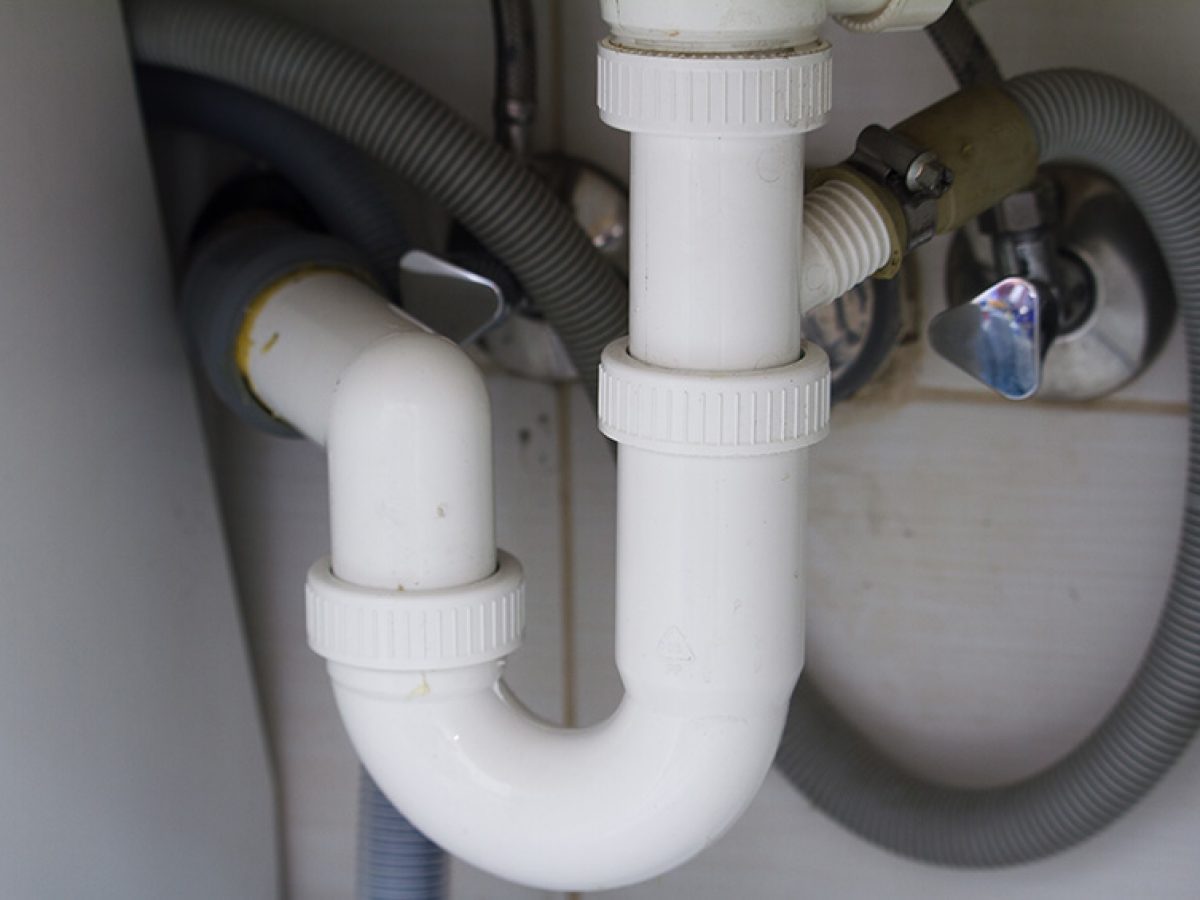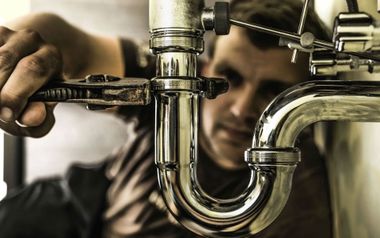Essential Insights About Your Home's Plumbing System Anatomy
Essential Insights About Your Home's Plumbing System Anatomy
Blog Article
This great article listed below in relation to The Inner Workings of Your Home's Plumbing is really fascinating. You should check it out.

Recognizing exactly how your home's plumbing system functions is essential for every single property owner. From providing clean water for drinking, food preparation, and showering to safely eliminating wastewater, a well-kept plumbing system is important for your household's wellness and convenience. In this thorough overview, we'll discover the intricate network that makes up your home's pipes and deal tips on maintenance, upgrades, and taking care of usual issues.
Intro
Your home's plumbing system is more than simply a network of pipes; it's an intricate system that guarantees you have access to clean water and reliable wastewater removal. Recognizing its elements and how they work together can aid you protect against pricey repair services and guarantee everything runs smoothly.
Basic Elements of a Pipes System
Pipes and Tubes
At the heart of your plumbing system are the pipes and tubing that lug water throughout your home. These can be made from different products such as copper, PVC, or PEX, each with its benefits in terms of sturdiness and cost-effectiveness.
Components: Sinks, Toilets, Showers, etc.
Components like sinks, bathrooms, showers, and bathtubs are where water is made use of in your home. Understanding just how these fixtures attach to the plumbing system helps in detecting troubles and planning upgrades.
Valves and Shut-off Factors
Valves control the flow of water in your plumbing system. Shut-off shutoffs are vital during emergencies or when you require to make repairs, permitting you to isolate parts of the system without disrupting water circulation to the entire home.
Supply Of Water System
Key Water Line
The main water line attaches your home to the municipal water or a personal well. It's where water enters your home and is dispersed to various components.
Water Meter and Stress Regulator
The water meter procedures your water usage, while a pressure regulatory authority ensures that water flows at a secure pressure throughout your home's pipes system, preventing damage to pipes and fixtures.
Cold Water vs. Hot Water Lines
Recognizing the difference between cold water lines, which supply water directly from the primary, and warm water lines, which bring warmed water from the water heater, assists in repairing and planning for upgrades.
Drain System
Drain Pipes Pipes and Traps
Drain pipes carry wastewater far from sinks, showers, and toilets to the drain or septic tank. Traps stop sewage system gases from entering your home and likewise catch particles that could trigger obstructions.
Ventilation Pipes
Ventilation pipes enable air right into the water drainage system, avoiding suction that might slow drain and trigger catches to vacant. Correct air flow is essential for keeping the honesty of your pipes system.
Importance of Proper Drainage
Guaranteeing appropriate water drainage protects against back-ups and water damages. Regularly cleaning drains and maintaining traps can avoid expensive repair work and prolong the life of your plumbing system.
Water Heating Unit
Kinds Of Water Heaters
Water heaters can be tankless or conventional tank-style. Tankless heating units warm water as needed, while containers save heated water for immediate use.
How Water Heaters Connect to the Pipes System
Recognizing just how water heaters attach to both the cold water supply and warm water circulation lines assists in identifying problems like insufficient hot water or leakages.
Upkeep Tips for Water Heaters
On a regular basis flushing your water heater to remove debris, checking the temperature level setups, and evaluating for leaks can extend its lifespan and boost power effectiveness.
Common Pipes Issues
Leaks and Their Reasons
Leakages can take place as a result of maturing pipes, loose installations, or high water pressure. Attending to leakages quickly protects against water damage and mold development.
Blockages and Clogs
Obstructions in drains pipes and commodes are frequently caused by purging non-flushable items or a build-up of oil and hair. Utilizing drain displays and being mindful of what drops your drains can prevent blockages.
Signs of Pipes Troubles to Watch For
Low tide pressure, slow drains, foul odors, or unusually high water costs are indications of possible pipes troubles that ought to be attended to quickly.
Pipes Upkeep Tips
Regular Examinations and Checks
Arrange yearly pipes assessments to capture problems early. Seek indications of leakages, corrosion, or mineral buildup in taps and showerheads.
DIY Maintenance Tasks
Straightforward tasks like cleansing tap aerators, checking for toilet leakages using dye tablet computers, or insulating subjected pipelines in chilly climates can protect against major plumbing concerns.
When to Call a Specialist Plumbing Technician
Know when a pipes problem calls for expert knowledge. Attempting complicated repair services without appropriate expertise can bring about more damage and higher repair prices.
Updating Your Plumbing System
Reasons for Updating
Upgrading to water-efficient fixtures or changing old pipes can improve water quality, decrease water bills, and enhance the value of your home.
Modern Plumbing Technologies and Their Benefits
Explore modern technologies like smart leakage detectors, water-saving bathrooms, and energy-efficient water heaters that can conserve cash and reduce ecological impact.
Price Factors To Consider and ROI
Compute the ahead of time prices versus lasting savings when thinking about pipes upgrades. Lots of upgrades spend for themselves through reduced energy expenses and fewer repairs.
Environmental Effect and Preservation
Water-Saving Fixtures and Home Appliances
Mounting low-flow taps, showerheads, and commodes can substantially minimize water use without compromising performance.
Tips for Reducing Water Usage
Straightforward practices like dealing with leaks quickly, taking shorter showers, and running full lots of washing and meals can conserve water and lower your energy costs.
Eco-Friendly Plumbing Options
Take into consideration sustainable plumbing products like bamboo for floor covering, which is durable and eco-friendly, or recycled glass for counter tops.
Emergency Readiness
Actions to Take During a Pipes Emergency
Know where your shut-off valves are located and exactly how to turn off the water system in case of a ruptured pipeline or significant leak.
Importance of Having Emergency Get In Touches With Helpful
Keep get in touch with details for neighborhood plumbing professionals or emergency situation solutions readily offered for fast reaction throughout a pipes situation.
DIY Emergency Situation Fixes (When Relevant).
Temporary fixes like utilizing air duct tape to spot a leaking pipeline or putting a container under a leaking tap can lessen damages up until an expert plumbing technician arrives.
Conclusion.
Comprehending the anatomy of your home's pipes system empowers you to keep it efficiently, saving time and money on repair work. By complying with routine maintenance regimens and staying notified about modern-day pipes innovations, you can guarantee your pipes system operates successfully for several years to find.
HOW YOUR PLUMBING SYSTEM WORKS
Which Pipes Do What?
Blue lines = fresh water supply entering the building
Red lines = hot water supply entering the building
Grey lines = pipes carrying waste away from the building and venting pipes carrying gases away from the building (through the roof)
YOUR MAIN PLUMBING SYSTEMS
There are two main plumbing systems that support your home s basic plumbing needs one that brings clean water into your home, and one that sends dirty water away from your home. Connected to the toilet, bath, shower, and other faucets in your home, these two systems keep your water flowing in the right directions.
ACCESSING FRESH WATER
Fresh and clean water is brought into your home through the main water supply line . Filtered through one pipe, this water is pressured to flow into the various fixtures in your home at any given time.
This water can be sourced from a well located on your property, a pond or river (mostly cottages), or, as in most cases, from the city s municipal water treatment centre. However, it is important to note that water that is untreated, such as the water siphoned from ponds or rivers, may not be safe to drink. Personal water supplies always need to be treated for hardness and contaminants before consumed.
MUNICIPAL WATER SUPPLIES
Improve taste and odour
Remove sediment
Eliminate hardness
Reduce chlorine
COLD WATER SUPPLY VS. HOT WATER SUPPLY
Cold water flows into your home or building through the service line, which then distributes hot or cold water to your fixtures. This line is most commonly run through a central column that runs floor to floor. Hot water runs in short and straight pipes as the longer the pipeline, the more heat that will be lost in the transfer. Having shorter pipes also allows residents to access hot water more quickly.
WASTE WATER SYSTEM
Your wastewater system is divided into two parts pipes that send wastewater away from your home and venting pipes that send sewer gas away from your home. Sewage water travels through pipes that flush the water and waste towards local sewers that are operated and managed by your city or town. Most sewer systems rely on gravity to move the wastewater to where it needs to go.
The further away from your toilet or sink, the larger wastewater pipes become. This allows for waste to be disposed of from various parts of your home or business at once without pipe blockages. The angle and flow of these pipes are also essential for keeping your waste pipes clear of build up.
https://harrisplumbing.ca/how-your-home-plumbing-system-works/

HOW YOUR PLUMBING SYSTEM WORKS
Which Pipes Do What?
YOUR MAIN PLUMBING SYSTEMS
There are two main plumbing systems that support your home s basic plumbing needs one that brings clean water into your home, and one that sends dirty water away from your home. Connected to the toilet, bath, shower, and other faucets in your home, these two systems keep your water flowing in the right directions.
ACCESSING FRESH WATER
Fresh and clean water is brought into your home through the main water supply line . Filtered through one pipe, this water is pressured to flow into the various fixtures in your home at any given time.
This water can be sourced from a well located on your property, a pond or river (mostly cottages), or, as in most cases, from the city s municipal water treatment centre. However, it is important to note that water that is untreated, such as the water siphoned from ponds or rivers, may not be safe to drink. Personal water supplies always need to be treated for hardness and contaminants before consumed.
MUNICIPAL WATER SUPPLIES
COLD WATER SUPPLY VS. HOT WATER SUPPLY
Cold water flows into your home or building through the service line, which then distributes hot or cold water to your fixtures. This line is most commonly run through a central column that runs floor to floor. Hot water runs in short and straight pipes as the longer the pipeline, the more heat that will be lost in the transfer. Having shorter pipes also allows residents to access hot water more quickly.
WASTE WATER SYSTEM
Your wastewater system is divided into two parts pipes that send wastewater away from your home and venting pipes that send sewer gas away from your home. Sewage water travels through pipes that flush the water and waste towards local sewers that are operated and managed by your city or town. Most sewer systems rely on gravity to move the wastewater to where it needs to go.
The further away from your toilet or sink, the larger wastewater pipes become. This allows for waste to be disposed of from various parts of your home or business at once without pipe blockages. The angle and flow of these pipes are also essential for keeping your waste pipes clear of build up.
https://harrisplumbing.ca/how-your-home-plumbing-system-works/
We had been introduced to that article on Anatomy of a House: Understanding the Components from someone on a different website. Are you aware of anybody else who is inquisitive about the topic? Take a moment to share it. Thanks a lot for going through it.
Call Today Report this page